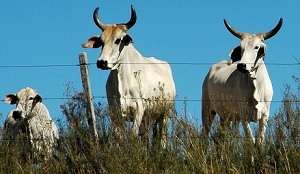

And the much-romanticized era of the open range was over. The longhorn was being replaced by the Hereford, which is still the world’s most popular breed of cattle. By the mid-1880s, the cattle industry was big business. The stereotype of the heroic white cowboy is far from true, however. As the beef business grew and became organized hierarchically, it also became international in scope. The cowboy became the symbol for the West of the late 19th century, often depicted in popular culture as a glamorous or heroic figure. By the 1880s, most American Indians had been confined to reservations, often in areas of the West that appeared least desirable to white settlers. In the conflicts that resulted, the American Indians, despite occasional victories, seemed doomed to defeat by the greater numbers of settlers and the military force of the U.S. The loss of the bison and growth of white settlement drastically affected the lives of the Native Americans living in the West. The cattle industry rose in importance as the railroad provided a practical means for getting the cattle to market. The huge herds of American bison that roamed the plains were almost wiped out, and farmers plowed the natural grasses to plant wheat and other crops. Settlement from the East transformed the Great Plains. Chinese railroad workers further added to the diversity of the region's population. African-American settlers also came West from the Deep South, convinced by promoters of all-black Western towns that prosperity could be found there. White settlers from the East poured across the Mississippi to mine, farm, and ranch. The completion of the railroads to the West following the Civil War opened up vast areas of the region to settlement and economic development.

The American West, 1865-1900 Popular Graphic Arts


 0 kommentar(er)
0 kommentar(er)
